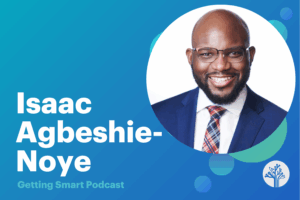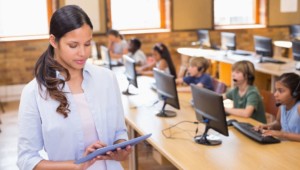10 Unique Lesson Ideas for BYOD and BYOT
Bring your own device (BYOD) and bring your own technology (BYOT) policies are growing in education and the workplace. Teachers are taking advantage of mobile devices for “m-learning,” putting those mini computers in kids’ backpacks and pockets to use. Here are 10 lesson ideas for BYOD and m-learning in the classroom.
- Answer Poll Questions Through Text
Poll Everywhere allows teachers to create a multiple choice or open-ended poll question. Then, students can text their answers and watch the poll populate on the screen. Click here to answer our poll question. - Ask Google Questions
Google SMS allows you to look up words in the dictionary, inquire about dates in history and find the capital of a foreign country by simply texting a question to GOOGLE or 466453. - Provide Classroom Instruction On QR-Codes
With simple QR-Code generators like Kaywa QR-Code, you can provide links to educational content that students can access on their smart phone or tablet. Try our QR-Code below:
- Study With a Flashcard App
With apps like Flashcard Deluxe, students can write up digital flashcards on their notes in order to study on their smart phone, iPod or tablet. - Share Ideas Over Text
Wiffiti allows students to text responses or feedback that can then be projected on a screen to the whole class. This way, students can actively participate in discussion using their mobile phones, computers or tablets. Click here to join Getting Smart on Wiffiti. - Connect With Parents and Students With Google Voice
Mike Shumake published a blog recently on how to use Google Voice to connect with parents and students after school. This is a great way to keep in touch with a large group of people in a cost-effective way. - Listen to Educational Podcasts
iTunes U provides countless educational podcasts across a wide spectrum subject areas by quality and credible resources, scholars and universities. Allowing students to listen to podcasts in class provides another dynamic way of learning to material. What’s more, students can move at their own pace through the podcast, replaying anything that may have been missed. - Visually Explore Outside of the Classroom
Apps like Google Earth, museum apps and more allow students to travel the globe from the comfort of their classroom desk. In an increasingly global economy and world, mobile apps are a great way to explore beyond the reaches of the community. - Capture Lessons With Digital Cameras
Students can use a digital camera, a cell phone, or tablet to capture lessons from their environments such as geometric shapes and more. Check out this list of “1001 Uses for a Digital Camera.” - Video Conference to Connect With Guest Speakers or Pen Pals
Students could use a laptop, smart phone or tablet to video conference with classroom guest speakers or pen pals across the country or globe. View our list of “Top Apps for Web Conferencing.”







Eric Curts
Our high school piloted BYOT last year and we are working on expanding the program this year. We used Poll Everywhere as you had mentioned, but also had success with www.socrative.com as an alternative to student response systems.
I also co-host a podcast where we dedicated an hour-long episode to BYOT / BYOD to discuss the benefits, challenges, uses, and resources. You can get the episode here: http://www.thestateoftech.org/2011/10/episode-3-podcast-byot.html
Replies
Tom Vander Ark
Thanks Eric. We're working on a BYOD white paper and this is helpful
Patricia Wejman
I'm a 50 year old mom of an 8 year old boy with Down Syndrome and some form of Autism. As an "old schooler" I tend to think some ways of learning can lead to brain overload...and that kids these days don't know any different. I'm wary about anything that creates a barrier to individual experience. I've stood below the Sistene Chapel and it brought tears to my eyes...something that no picture in a book or on tv ever accomplished. Any device can be used to serve good, bad or idiotic purposes. My son has latched on to using a computer and we are now seeing if working with an iPAD will help him bridge the gap from his non-verbal world to ours better than sign language and other methods have done so far. One can learn plenty in many ways but having the basics of a strong moral character are what really matter in order to function well in the world.
Sheri Edwards
Even in my rural, high poverty area, students want to bring their devices to school and use them to learn. What better way to get them to be life-long learners? Great tips here! Thank you so much.
Michael Groves
Just find out information of great lessons when I substitute in class that have BYOT. ASnd to get a feel for how to manage it. Thanks for the knowledge. Love to have the 10 lessons. Thanks
Michael
Irene Gomez
I can´t wait to use some ideas!!!